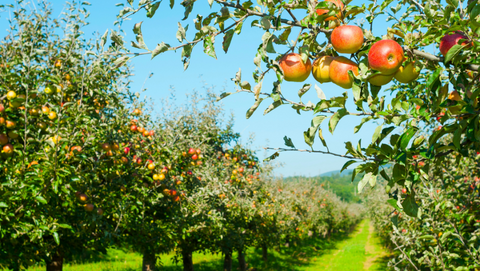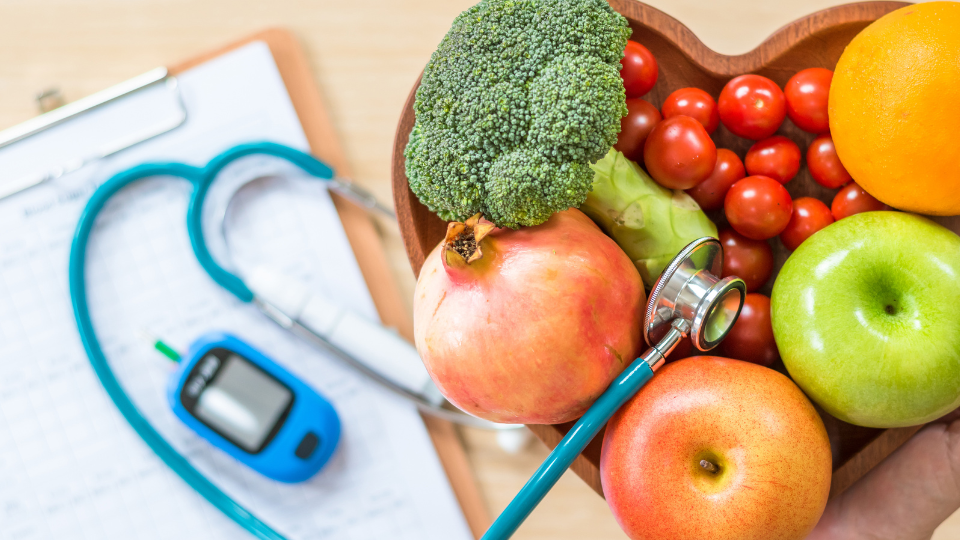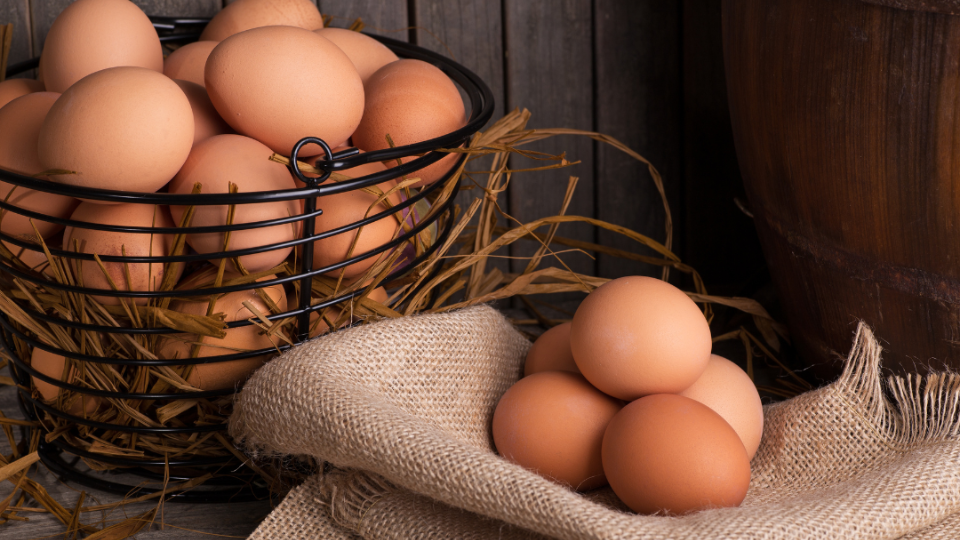Fruit and Vegetable Guide Series: Apples

Availability: Most apples ripen in September and October. If you buy apples during the summer, chances are they are last year’s stock that have been stored over the past several months. While they will be eatable, they will not be as crisp and may be better suited for cooking than fresh.
Eating: Apples are a favorite fruit of many people for eating out of hand, in fresh salads, or in a wide variety of cooked products.
Selecting: When shopping for apples, look for fruit free of blemishes and breaks in the skin since these can encourage spoilage and decay. Also, make sure to purchase apples “in season” for optimal quality. If you are selecting apples from the home orchard or at a pick-your-own site, select firm apples, free of breaks in the skin, and with a background color (the non-red part of the apple skin) that is light yellow or yellow-green. Harvest the fruit by lifting toward the sky to release the stem from the tree, rather than by pulling, which can tear out the stem, damage the tissue, and shorten the storage life of the apple.
Cleaning and Preparing: Apples purchased at the store will likely be covered by a thin layer of wax to make them shinier and to protect them from drying out and rotting quickly. While eating the wax itself is not harmful, there may be some pesticide residue beneath the wax that was used to treat the apple prior to harvesting.
Rinsing the apple under cool water and drying it with a clean towel or paper towel should remove most of the wax and any dust or prints from other handlers. Use a soft cloth or vegetable brush to scrub away unwanted wax and other residues. Be sure to rinse well. Commercial products are also available for washing fresh produce. Follow instructions on the product label. Washing apples in a sink full of water is not recommended since the standing water can spread contamination from one apple to another. Use of soap or detergent is not recommended or approved for washing fruits and vegetables because the produce can absorb detergent residues.

Storing: It is difficult to replicate the storage conditions used by commercial harvesting companies for prolonging the quality of apples for several months. However, at home, apples may be stored in the refrigerator, preferably in the crisper drawer or an unsealed plastic bag. It is important to remember to store fresh apples separately because apples release ethylene gas that can be damaging to other fruits and vegetables.
Fresh apples can also be kept at room temperature for several days before eating but the more time they are kept at room temperature the sooner they will begin to shrivel and lose flavor as well as crispness.
Cooking: Apples can be used fresh as a snack, in fresh tossed salads or cooked using many methods. They can be cooked to be used as a side dish, made into a sauce, or added with other ingredients to create a main dish.
Baked: To make baked apples, select a variety of apples suitable for baking such as Braeburn, Fuji, or Golden Delicious. Leave the peel intact, remove the core and score the skin several times with a sharp knife to prevent the skin from rupturing during baking.
Place 4 to 6 apples, blossom side down in an oven-safe baking dish with sides. In the cavity formed by removing the core, place 1 tsp of butter or margarine. Next add ½ tbsp of sugar on top of the butter in the cavity of each apple. Bake, uncovered, for approximately 50 minutes or until the apples are tender when poked with a fork.
In a small bowl combine ¼ cup of brown sugar, 2 tsp. of flour, ¼ tsp. of cinnamon and 2 tsp. of water. Stir until blended. Sprinkle the mixture over the hot baked apples and place back in the oven for 10 to 15 minutes. Serve while still warm.
Fresh Applesauce: To make fresh applesauce, select a variety of cooking apples. You will also need sugar and water. Optional ingredients may include cinnamon, nutmeg, cloves, lemon juice or apple cider. Apple varieties best suited for cooking include Braeburn, Golden Delicious, Granny Smith, Jonathan, or Honeycrisp.
Peel five to six medium-sized cooking apples. Cut apples in half and then into quarters. Remove the core from the quartered sections. Slice quartered apples into thick slices.
To avoid having the sliced apples turn brown, place them immediately into cool water with lemon juice (about 1 tsp lemon juice per gallon of water). Do not allow apples to soak for more than 15 minutes.
Place ½ cup of fresh, cold water into a heavy 2-quart saucepan. Drain slices and add them to the saucepan. Bring apples and water to a boil over medium heat. Cover saucepan with lid and reduce heat to low. For chunky sauce simmer apples for 8 to 10 minutes. For smoother applesauce, simmer for 13 to 15 minutes.
Add up to ½ cup sugar during the last 2 to 3 minutes of cooking time. Sugar adds sweetness but also helps to thicken the sauce. If no sugar is added, cook apples longer until desired thickness is reached. Serve warm or chilled.
Incorporation into other recipes and meals: Fresh apples add crunch and a burst of tart flavor to salad recipes, while cooked apples may be used as a sweet, warm applesauce for pork. Several varieties make delicious frozen, chilled or warm desserts.
Nutrition Highlights: One medium apple has about 95 calories. Apples are a great source of fiber and vitamin C. They also provide a variety of phytochemicals, which are found in food and have a variety of health benefits. The skins contain a majority of the nutrition and is recommended to eat the skins.
Preserving: For more information on how to preserve Apples, please visit the USU Extension Preserve the Harvest website. Or click on the following here.
References
- https://extension.usu.edu/yardandgarden/research/apple-production-and-variety-recommendations-for-the-utah-home-garden
- https://www.hsph.harvard.edu/nutritionsource/food-features/apples/
Kathleen Riggs, Extension Professor
Related Nutrition Articles

















